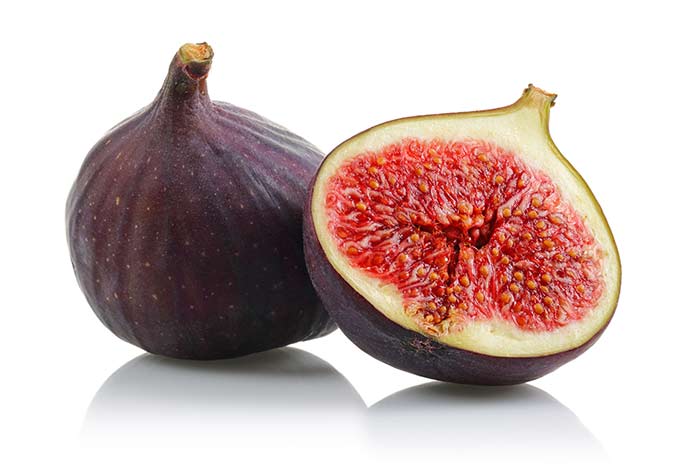
Figs are a fruit where both the flesh and skin are edible. They are grow best in areas with warm summers and mild winters (however, the Chicago Hardy variety can be grown down to zone 5).
If you can find locally grown figs at your farmers market, they'll have the best flavor (as they don't store or ship well when picked fully ripe).
Jump to:
When are figs in season?
Figs are typically in season starting in mid-May and last through November. Some varieties (like Black Mission) actually have two seasons: the early summer season produces fruit on old tree branches, and the late-summer/fall season produces fruit on new branches.
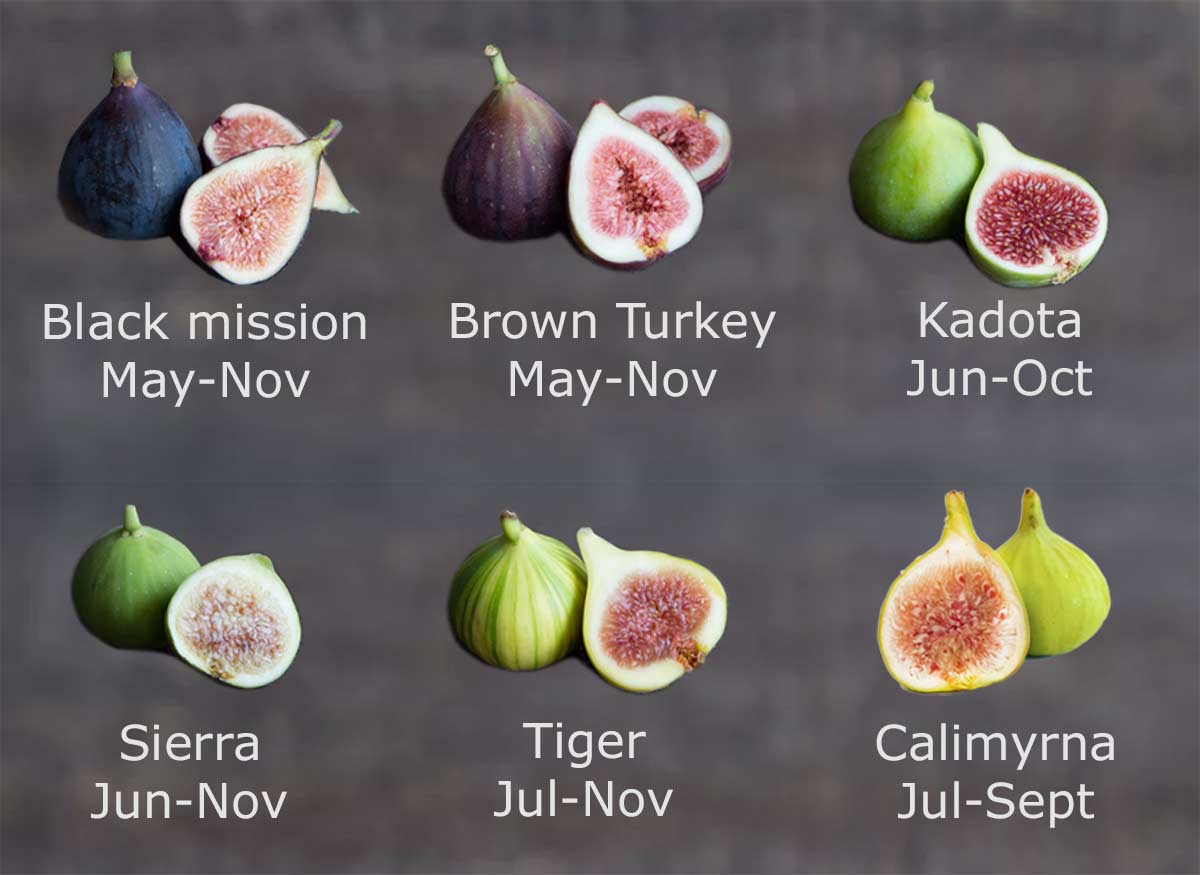
Season by variety
Black Mission figs are usually the first to show up, quickly followed by Brown Turkey. Most green figs are in season starting in June or July. Note that Calimyrna figs have a noticeably short season, just 3 months long.
- Black Mission: May - November
- Brown Turkey: May - November
- Kadota: June - October
- Sierra: June - November
- Tiger: July - November
- Calimyrna: July - Sept
However, the seasons are getting longer, thanks to agriculturalists' efforts to extend the growing season. One California farm managed to harvest from May to February (although production isn't wide-spread enough to ship those across the country... yet).
Ripe fig fruits are very perishable and don't ship well, so the best ones will be from local sources.
See what else is in season at the same time: June, July, August, September, October, and November.
Why don't we see imported figs?
Often when we want a fruit year-round, we import them from other countries. Chile produces a large fig crop but were first allowed to be imported to the US in 2011. It is heavily permitted and the figs need to be sprayed directly with methyl bromide to rid it of any pests (that might then spread to US agriculture).
Types of figs
California grows 98% of the fresh figs in the US and they specialize in 5 varieties: Mission, Brown Turkey, Kadota, Sierra, and Tiger. However, I've seen a couple others at markets and in stores so I've listed those as well.
Depending on the type of fig, there's a wide range of flavors it might have - some subtle, others assertive, including berry, honey, caramel, molasses, and plain sugar.
Black figs
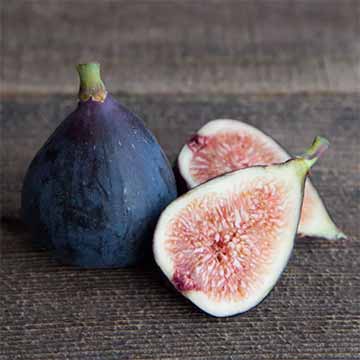
Black mission fig
These are the sweetest variety and widely grown throughout California with a molasses-caramel and assertive figgy flavor. Also the most commonly dried fig. Pair with cocoa and savory spices to add a 'meaty' flavor to a dish, or wrap with prosciutto and roast.
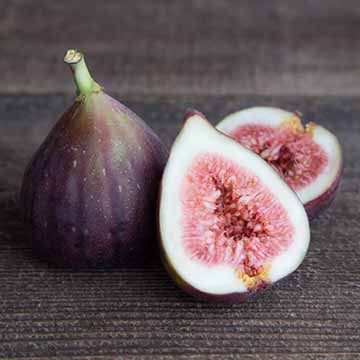
Brown turkey
A slightly milder flavor than mission figs and less sweet, making them a great addition to salads without overpowering the other flavors. If their flavor falls flat, drizzle them with honey, grill them, or bake into a dessert with added sugar.
Some stores sell both of these figs with a generic "black fig" label (like Trader Joes). The varieties likely vary based on their sources and the seasonality.
Green Figs
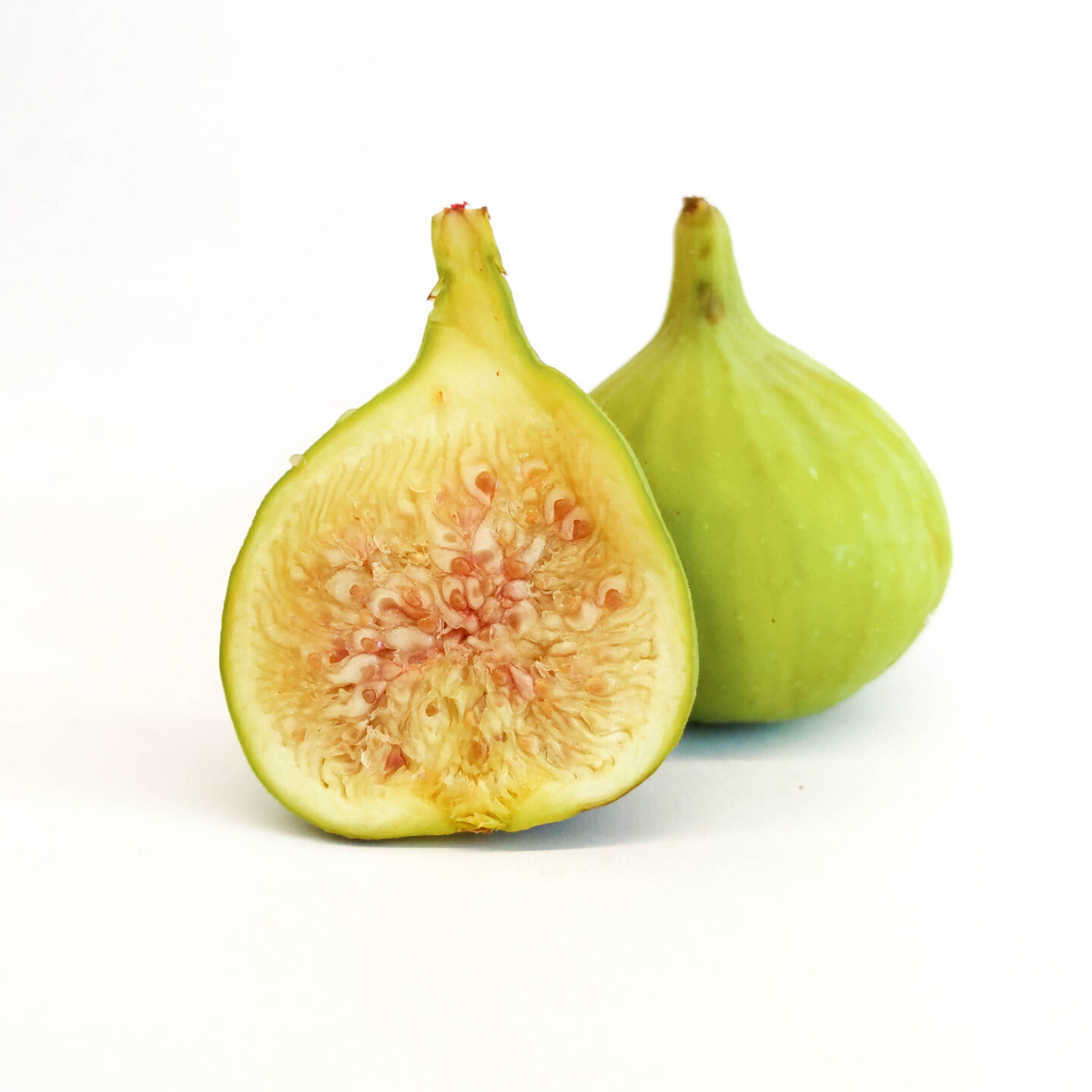
Calimyrna (aka smyrna)
These have a nutty flavor that is more detectable than it is in other fig varieties. It's also the sweetest green variety, with a honey and butterscotch flavors coming through. Great for salads, on a cheese board, or stuffed with whipped goat cheese & nuts.
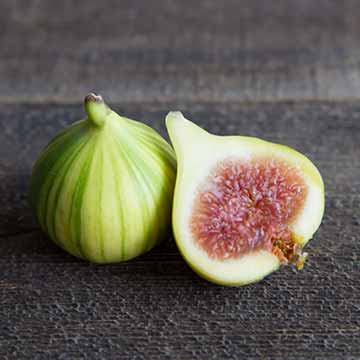
Tiger (candy stripe or panache)
The flavor of tiger figs skews more citrus and raspberry-jam than the nutty-honey flavors of other varieties. Recently gaining in popularity, they might still be hard to find as they are harder to grow.
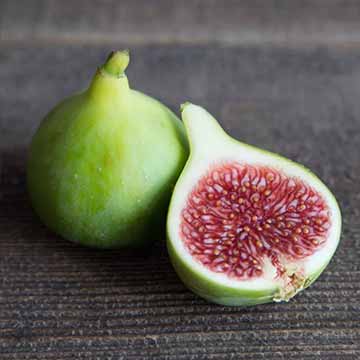
Kadota
A less-sweet fig without the flavor of honey and a smoother flesh than other varieties. Not the best for eating as a sweet snack, but work well in salads with other stronger flavors, drizzled with honey, or turned into a jam.
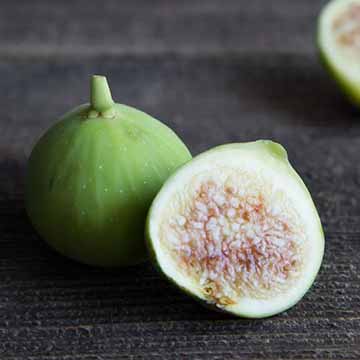
Sierra
A recent variety (introduced in 2005) with a light, sweet flavor. (I haven't personally tried these so unfortunately, I am unable to elaborate on the flavor)
Some of the varietal images posted with permission from California Figs
Generic labeled "Green" figs might be offered at your grocery store. The actual specific varieties might vary depending on what's available throughout the season.
Good vs bad figs
Fresh figs should be soft, yielding to pressure when gently squeezed. Look for ones with stems still attached and holding strong - loose stems are usually a sign they are overripe.
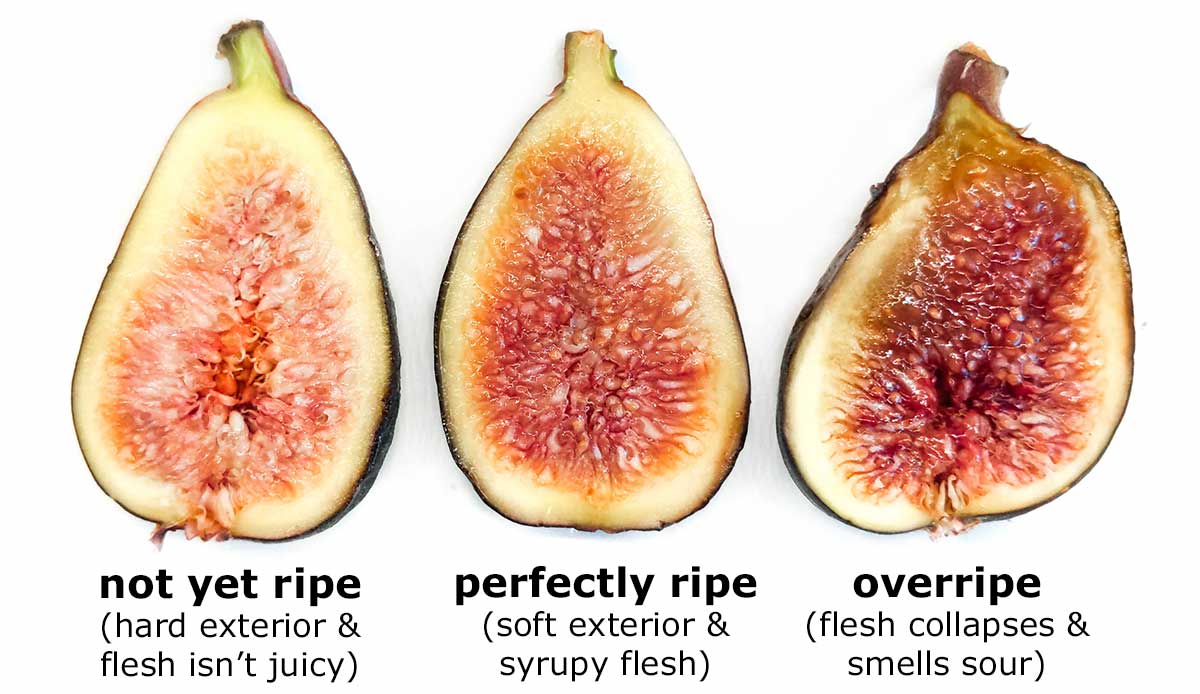
Unlike most fruit, where wrinkled skin is a sign of being overripe, plump but slightly wrinkled figs are the best kind. But pass up figs that look shrunken or ones that have sap seeping from cracks - those are bad and overripe.
If the skin and stem are really firm and shiny, it is less ripe and likely picked too soon. However, if you aren't going to use the figs for a few days, these might be best for you as they will last longer at home (if they lack flavor, drizzle honey on them or bake into a dessert).
Lastly, if they smell slightly 'sour' they are overripe, and avoid ones with bruises.
If your picking fresh fig fruits from a tree, look for ones that have started softening and 'droop' on the tree.
Short shelf life
Really fresh figs are so perishable that you should eat them within 1-2 days. Ideally you store them on the counter, but they won't last much past a day there.
You can store them in a shallow bowl or plate in the fridge (don't stack them on top of each other) and they will last up to 5-7 days. Although they can last up to 2 weeks in the fridge if you are lucky.
The colder temperatures inhibit the flavor slightly. Remove figs from the fridge 30 minutes before eating (they taste better at room temperature).
Don't cover them, as they don't like extra humidity. If you want to score extra points, set each fig in a torn open paper bag to catch extra moisture and syrup so it doesn't spoil other figs.
Are fig skins edible?
Yes, the skin is totally edible. Once you remove the stem, figs can be eaten whole. Some varieties have thinner skin than others, but all of them are edible.
When baking with figs or using them in a jam or sauce, the whole fruit can be used - no need to try and remove the skin.
Seasonal recipes
Fresh figs are quite versatile, pairing well with everything from meat to desserts. Classic pairings include honey, creamy cheeses, and bacon. Some recipes require perfectly ripe figs, others can use under or slightly overripe ones and work perfectly fine, like this fresh fig banana bread recipe.
Breakfast
Figs are great for making jam due to their naturally high pectin content. They're also an easy addition to your morning yogurt or oatmeal. I also included a sticky bun recipe (while it calls for dried figs, fresh will work perfectly as well).
Appetizers
If you are stuffing figs, you might want ones that are just slightly under-ripe so they don't fall apart when baked. Baking will soften them and often honey is added to sweeten them as well.
Mains & salads
Perfectly ripe figs are great on salads or any dish where they are used raw (uncooked). If they are under-ripe, cooking will soften them. Lastly, if your figs are really soft, they are great for simmering down into a sauce.
Dessert
More produce guides
Check out all of the produce guides, or see what's in season each month.

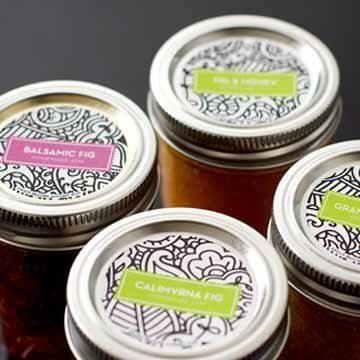
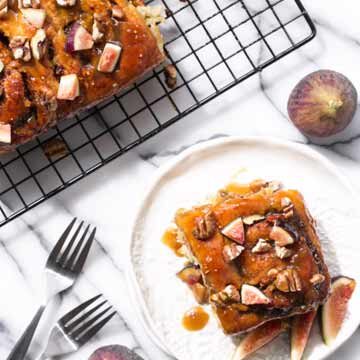
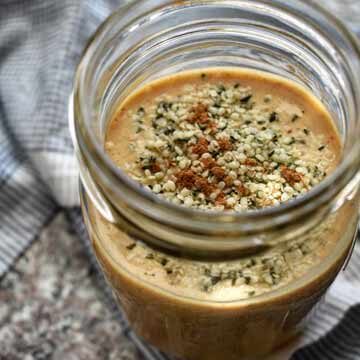
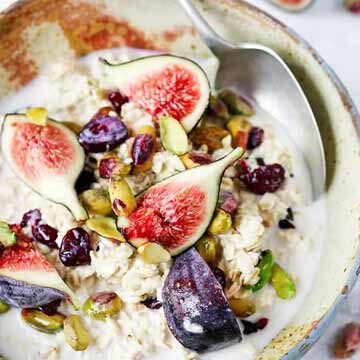
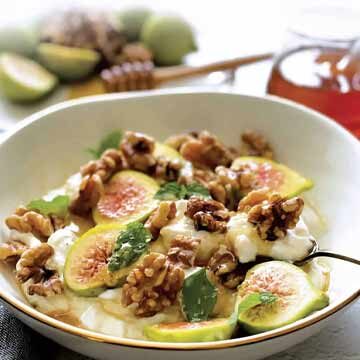
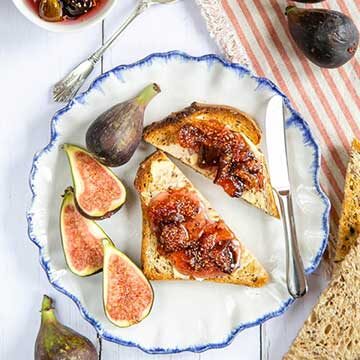
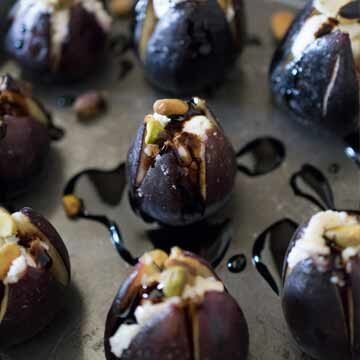
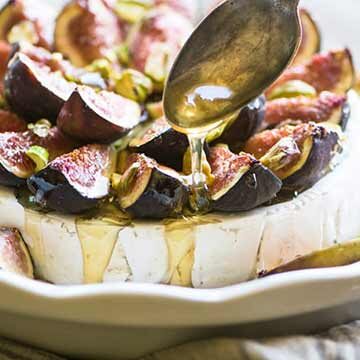

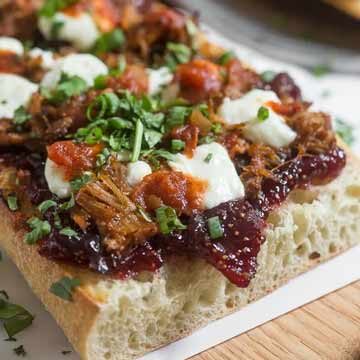
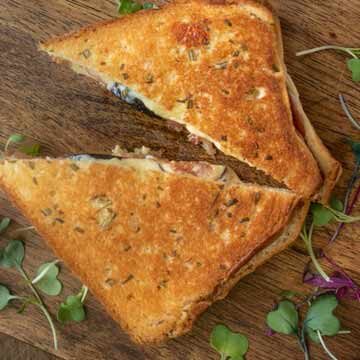

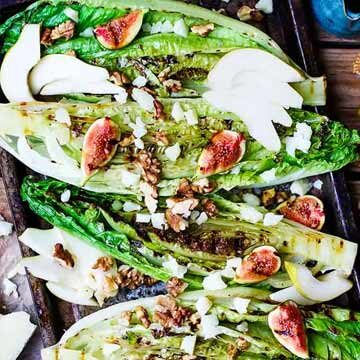


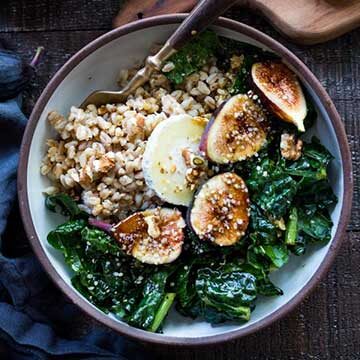

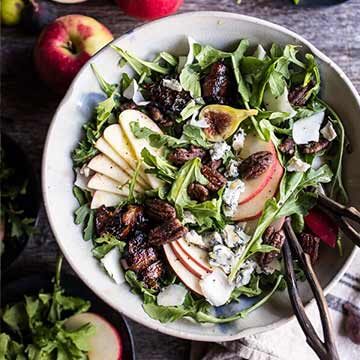
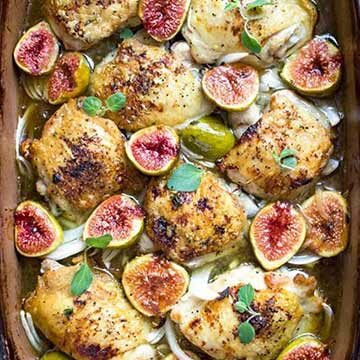
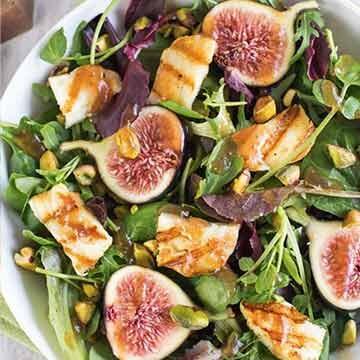
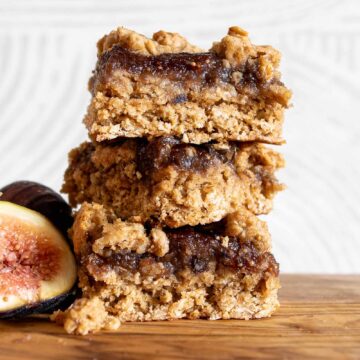
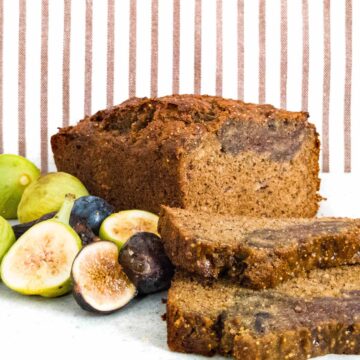

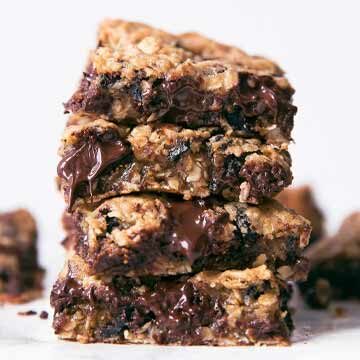


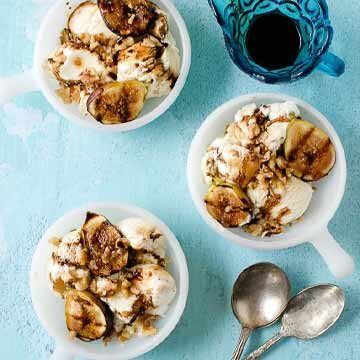
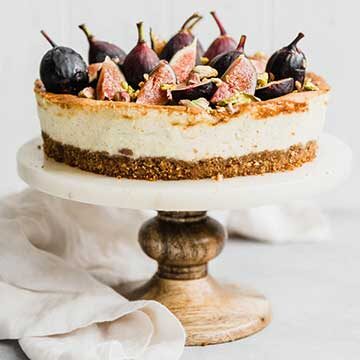

Terrassenüberdachung mit Montage says
Great website ... will use this site again in the future 😉 THANK YOU !!!! Greetings from Germany
Shirley says
In fig season I freeze a lot of them. Can I use them later to can in jars? Or should I use them for baking recipes?
Vee says
I do love ripe figs during their peak season, but they sure don't last long, do they?
About your question: based on this article from Kansas State University, yes, you can use frozen fruit. The article lists a few tricks: don't add sugar before freezing, pre-portion it before freezing, and thaw in the fridge before use in your canning recipe.
Additionally, the National Center for Home Food Preservation says, "Some fruits, especially boysenberries, make better jellies when frozen than when fresh, because freezing and thawing cause the juices to be released from the cells and the natural fruit color dissolves in the juice."
And last, but likely the most relevant, LSU talks specifically about freezing figs and their use in preserves. Under one of the recipes, their method of thawing figs is described as "place frozen figs in large kettle, add sugar and water and heat slowly until figs thaw. Add sliced lemon if desired, bring to a boil and cook as above."
Tim Robinson says
do you know if any of the tiger figs… or any of them, actually… Are available to purchase online? I’m crazy about tiger figs but I don’t think I’ve ever seen them in the grocery stores here in Seattle. thank you for the article it was very helpful and interesting. beautiful photography.
Veronica T says
I found Tiger Figs in Trader Joes this year. I hope you had luck finding them this year as well.
Sam zaki says
Hello- excellent job on the article.
I live in surprise, Arizona. Where can I buy fig baskets from? Any idea? No trees .
Thanks
Vee says
I often see them at Trader Joes when they are in season. Whole Foods might have them as well.
Milton says
I have 4 fig trees incuding the two you mention mission n brown turkey. Essax n olimpian. The Quilaty of the figs is poor. Most of the leaves are gone.The figs are kind of dry n rincle. I water them every day cause I live in the central valley n its very hot summer. Also they are around three years old n i never prune them. They are in adequate size planters. Was I supposed to prune them. Any help will be appreciated. Thank you.
Vee says
I think the problem with the fruit is that the tree is so young. For the fruit trees I've grown, the first year or two of fruit doesn't blow me away, but after year 5 or 6 they start to taste excellent. My guess is the plant is putting most of it's energy into creating a good root structure as well as above-ground vegetative growth. I haven't been able to find a research paper on this (yet!), but know you're not alone.
When you say the leaves are gone, did they dry up and fall off? Did they get chewed? Also, with regards to watering - if they are in a pot they might need to be watered 2-3 times a day in the Central Valley. What type of pot are you growing them in? I've found fabric pots to actually perform really well as the dirt and roots don't get as hot as with a plastic (or even wood) pot.
The hardest part about growing fruit trees is the patience it takes to wait years for fruit!
Lonnie Star says
So many more fig types than just the four you mentioned. I was hoping you were really going to geek out on figs
Vee says
This is so true. However, I try to get my hands on the varieties before talking about them so I can confirm online research. But I could maybe add info for more varieties and link to the sources, while letting readers know I haven't confirmed the findings personally.
Danny says
The freeze in Texas has hurt my trees badly as they haven’t started showing any leaves. How long should I wait to trim back branches and how much should I trim.
Vee says
Ouch, that's tough. Some varieties are also more resistant to frost than others. As for pruning, that's usually done in the winter when it is dormant. Since I'm not from Texas, I don't have enough experience with the trees and care for that climate. Instead, I suggest you ask the Texas Extension program for help.
I submit questions to extension offices all of the time. They are usually quite helpful. Give them the variety name of the fig tree (if you know it), as well as the age of the tree (or even an estimate).